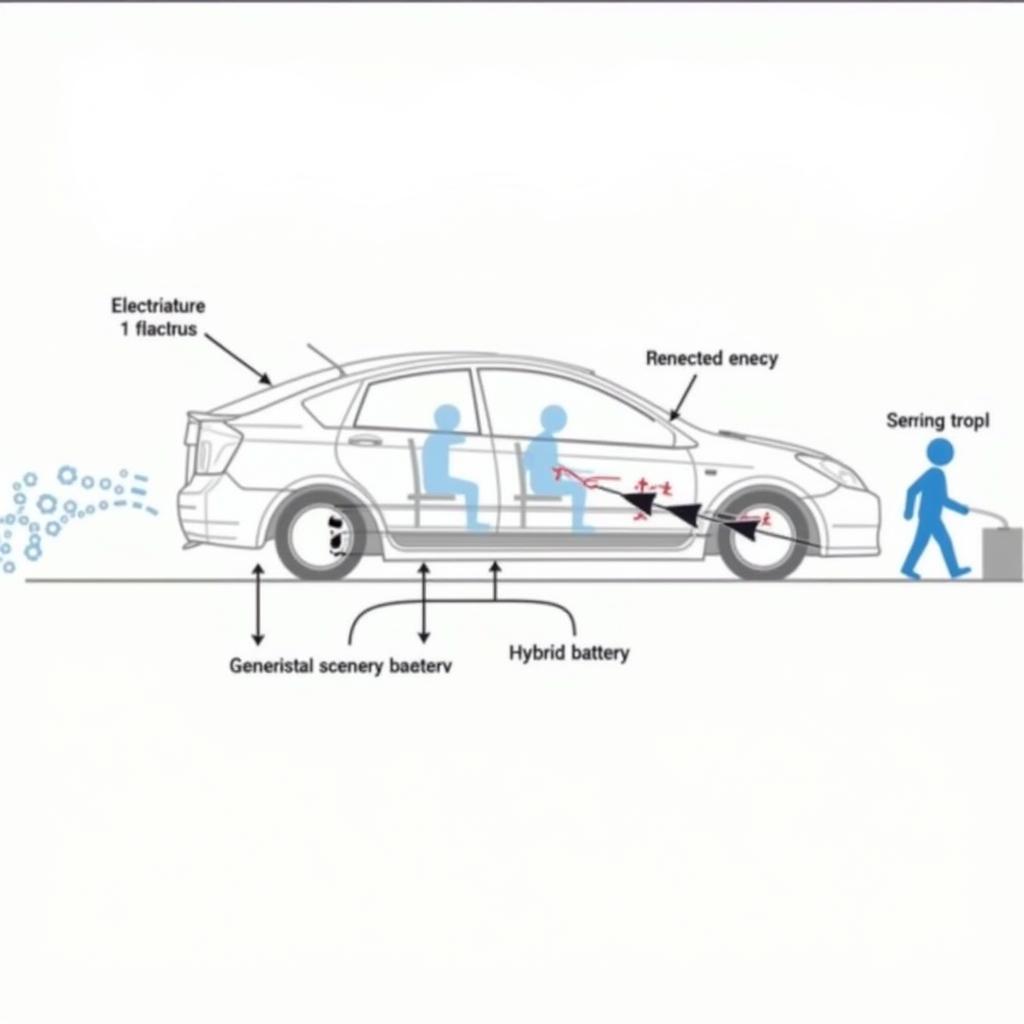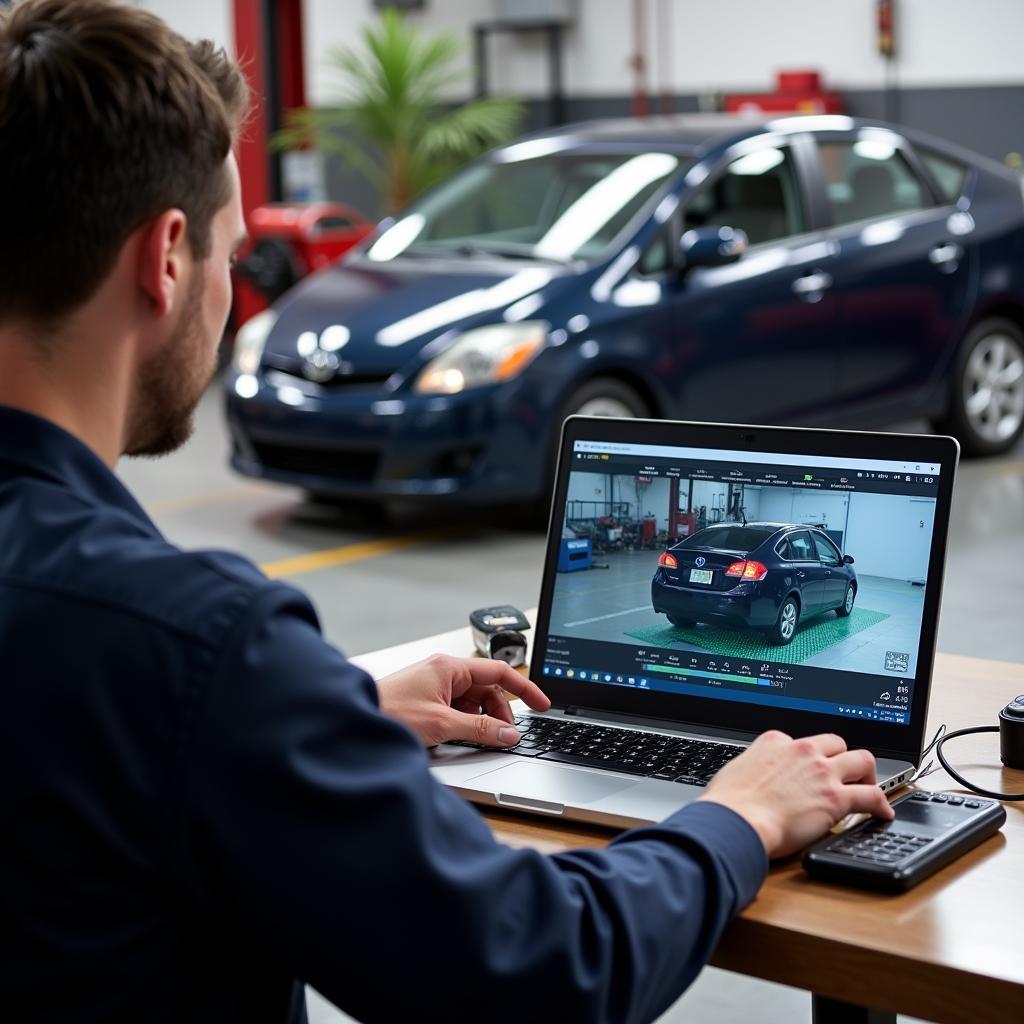If you own a 2006 Toyota Prius, you understand the frustration of seeing a warning light illuminate on your dashboard. A common culprit is the brake system warning light. This light signals an issue with your Prius’s complex regenerative braking system. Don’t panic; this article will guide you through the possible causes and solutions for a 2006 Toyota Prius brake system warning light.
Understanding Your Prius’s Regenerative Braking System
Before diving into the causes, it’s helpful to understand how the 2006 Toyota Prius’s unique braking system works. Unlike traditional braking systems, the Prius utilizes a regenerative braking system that captures kinetic energy during braking and converts it into electrical energy to recharge the hybrid battery. While this technology increases fuel efficiency, it also adds complexity to the braking system.
 2006 Toyota Prius Regenerative Braking System
2006 Toyota Prius Regenerative Braking System
Common Causes of the Brake System Warning Light
The brake system warning light on your 2006 Toyota Prius can be triggered by a variety of issues, ranging from minor to serious. Here are some of the most common culprits:
1. Low Brake Fluid
Like traditional braking systems, your Prius relies on hydraulic pressure from brake fluid to engage the brakes. Low brake fluid, often caused by a leak or worn brake pads, can trigger the warning light.
2. Faulty Brake Light Switch
The brake light switch is responsible for activating your brake lights when you press the pedal. A malfunctioning switch can not only leave you without brake lights but also confuse the car’s computer system, leading to the warning light.
3. Problems with the Regenerative Braking System
Because your Prius has a regenerative braking system, issues specific to this technology can also trigger the warning light. These problems can include a faulty hybrid battery, a malfunctioning brake actuator, or a problem with the regenerative braking control module.
 Brake Actuator in 2006 Toyota Prius
Brake Actuator in 2006 Toyota Prius
4. Issues with the ABS System
The Anti-lock Braking System (ABS) works in conjunction with your Prius’s regenerative braking system. Problems with the ABS, such as a faulty wheel speed sensor, can impact the overall braking system and trigger the warning light.
What to Do When the Light Comes On
“Seeing the brake system warning light on your Prius can be concerning,” says master Toyota technician, John Smith. “The best course of action is to safely pull over as soon as possible and consult your owner’s manual for specific instructions.” He further advises against continuing to drive with the light illuminated, as it could indicate a serious safety hazard.
Diagnosing the Problem
While some causes, like a faulty brake light switch, are relatively easy to diagnose and repair, others, such as problems with the regenerative braking system, require specialized tools and expertise. If you’re comfortable with car maintenance, you can check the brake fluid level and inspect for any visible leaks or damage. However, it’s generally recommended to take your Prius to a qualified mechanic specializing in hybrid vehicles for a comprehensive diagnosis.
Remote Diagnostics and Programming Solutions
In today’s technologically advanced world, remote diagnostics and programming have become increasingly common in the automotive industry. This technology allows certified technicians to access your car’s computer system remotely, diagnose the problem, and in some cases, even reprogram or update software related to the braking system. This can be a convenient and efficient solution, especially for software-related issues.
brake warning lamp on on my 2006 prius
 Remote Diagnostics for 2006 Toyota Prius
Remote Diagnostics for 2006 Toyota Prius
Conclusion
A brake system warning light on your 2006 Toyota Prius should never be ignored. While it could be a minor issue, it could also signal a serious problem with your car’s complex braking system. Prompt diagnosis and repair are crucial for ensuring your safety and preventing further damage to your vehicle.

